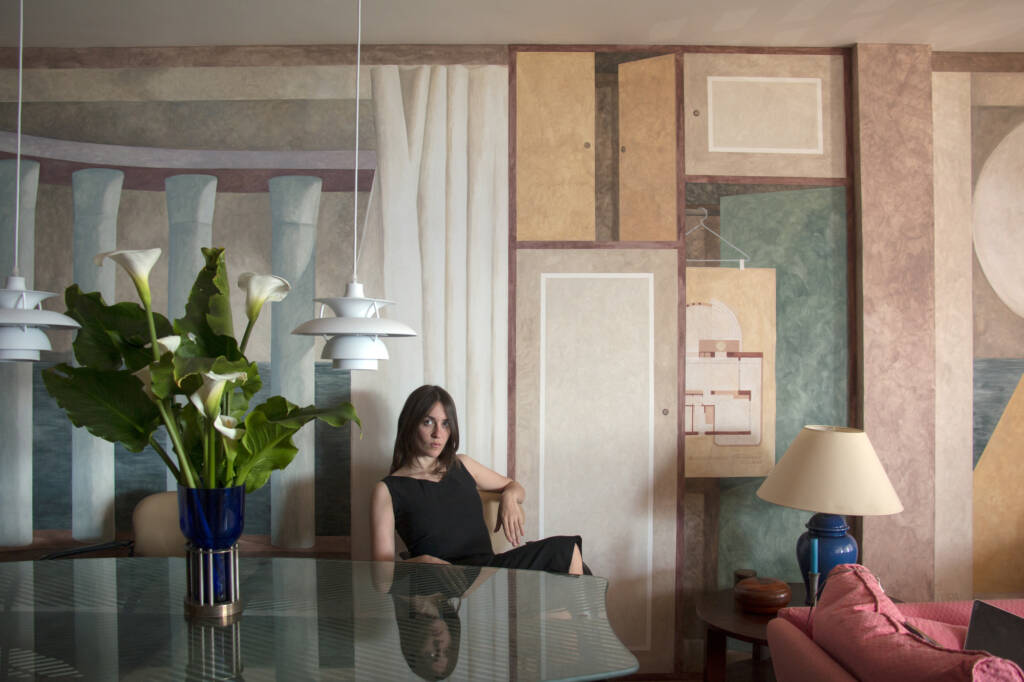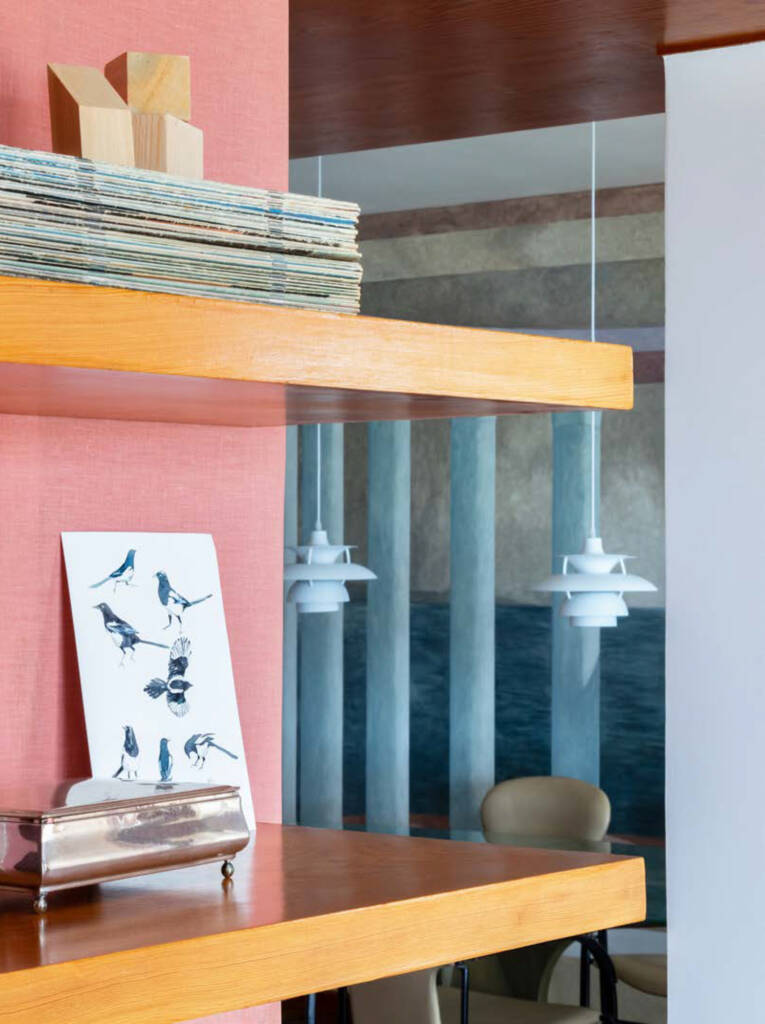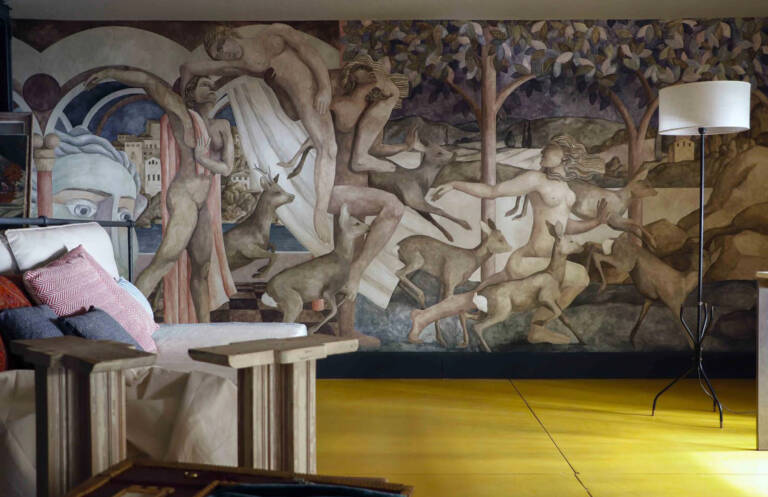

Elvira Solana is an architect-turned-muralist whose passion for pared-down living and sensory detail has made her a quietly revolutionary figure in contemporary design. Raised between Madrid and Paris, she draws on classical training and a deep love of poetry to create painted interventions that feel at once ancestral and utterly of-the-moment. Her work isn’t about decoration – it’s a way of reawakening our emotional bond to the spaces we inhabit; as proven with her Hermès’ centenary, for which she created a contemplative space in Barcelona – an ode to touch and time.
hube: Your murals often create the illusion of expanded spaces within confined interiors. Do you see this as a form of escapism, or is it a commentary on our perception of physical boundaries?
Elvira Solana: I believe this is a common approach in architecture: doing more with less. Today, we face the challenge of designing smaller and smaller houses, along with the exponential increase in land costs. Combined with the high expense of materials and labour shortages, murals offer a solution and a tool that can address all these issues. It’s not just a functional matter; there’s also a poetic aspect to it. Living is not merely a rational act; it is primarily sensory and emotional. Murals transform the way a room is perceived. You may see inspiring landscapes, infinite spaces, complex architecture painted on your walls… but the feeling you get when you enter the room should be more like that of a hermitage – connected to aspects that are more ancestral than exhibitionist, or at least that is my aim.
h: Transitioning from architecture to mural painting, how do you reconcile the permanence of architectural structures with the ephemeral nature of painted art?
ES: One of the aspects I value most about my work is that it is carried out on existing supports. It minimises impact, adapts to what has already been constructed, and can completely transform it with minimal resource usage. The concept of the ephemeral is subjective and tied to commitment. In many instances, when something is deemed ephemeral in architecture, it is primarily a reflection of our own will – our desire for change or replacement. The actual duration that objects can remain in place is far longer than the time our desires allocate to them.

